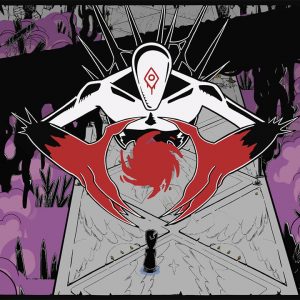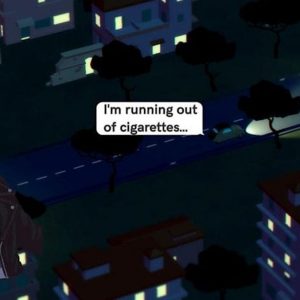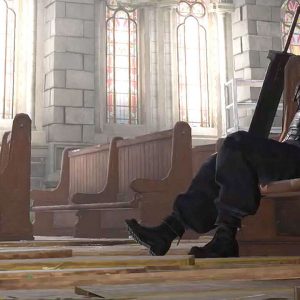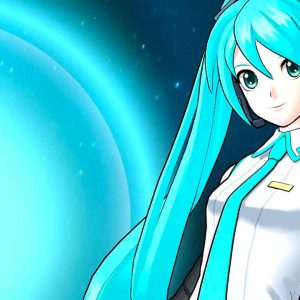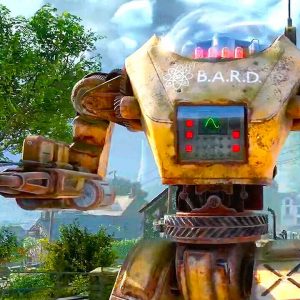[Editor’s Note: This article contains references to themes such as teenage suicide, self-harm and bullying. Reader discretion is advised.]
Silent Hill: The Short Message is a brand new game in the storied psychological horror series Silent Hill, announced and released today as a free download for PlayStation 5. I (Daniel) played the full game from start to finish ahead of its surprise release, along with my IGN Japan colleague Koji Fukuyama, and both of us found a lot to enjoy – and even more to ponder. This article is a mix of both of our impressions.
This compact two-hour first-person game centres on teenage protagonist Anita as she searches for her missing friend Maya in a spooky abandoned building. The game makes effective use of its themes of suicide, self-harm, bullying and isolation to create a feeling of genuine dread, bringing the central themes of early games in the series entries into a modern perspective, while offering a sensitive portrayal of its subject matter that never feels exploitative or crude.
That said, the game does include some fairly graphic scenes that may be too much for those who are sensitive to such themes, so I would advise caution. The game is rated 15 and up, and I’d say it’s a hard 15, and definitely not suitable for younger players.
Motoi Okamoto, the overall producer of the Silent Hill series, also served as the director and scenario director on The Short Message, while longtime Silent Hill team members Masahiro Ito and Akira Yamaoka return as monster designer and composer respectively. While the game was developed by Osaka-based indie studio HexaDrive, it’s clear that Konami has very much taken the lead – The Short Message is not a spinoff but a new standalone entry in the series, setting the tone for the remake of Silent Hill 2 and other announced titles such as Silent Hill f and Silent Hill: Townfall.
The game does a good job at raising expectations for upcoming games, while its use of a teenage protagonist and its gorgeous monster design feel fresh. The game’s story is linear, and its central mystery unfolds with some twists you may see coming and some you won’t. But while the story itself is interesting, its themes are what make The Short Message fascinating to play.
The game is set in an abandoned apartment building known as Villa, in the fictional city of Kettenstadt in modern-day Germany. Plans to renovate the apartment building were thwarted first by the financial crisis and then the Covid-19 pandemic; the building now lies in ruins, and has become a popular suicide spot.
High-school student Anita arrives at Villa in search of her friend Maya, a Japanese teen who is a talented graffiti artist with a large following on social media – which stokes envy and self-doubt in Anita’s heart. The apartment building is dark and dilapidated, and Anita’s search for Maya leads her through creepy hallways lined with thousands of sticky notes with scrawled slurs that reflect her low self-esteem: “Loser”, “creep”, “weirdo”, “ugly”.
Flashbacks and cutscenes jarringly juxtapose CG animation with live-action footage, reality with hellish visions, serenity with shocking scenes of self-harm. Anita’s relationships with Maya and with her other friend Amelie play out through smartphone chat messages filled with anxiety and uncertainty, a portrait of teenage angst.
And then, Anita’s smartphone screen and speakers crackle with distortion – and in a Silent Hill game, we know what that means.
Starring as it does a terrified teen, The Short Message features no combat. Most of the time players are free to explore at their own pace, but at certain sections in the game, Anita is suddenly pursued by a monster that appears to be made from cherry blossoms – beauty and the beast in one. All you can do is run.
Some of these sequences also add environmental puzzle elements, which can be challenging to solve while also under panicked pursuit from the pollinating predator.
The sudden change from slow exploration to crazed escape is genuinely scary: Lit with nothing but the light on Anita’s phone, and soundtracked by her strangled gasps mixed with Yamaoka’s brooding music, the narrow corridors are claustrophobic, looping and difficult to navigate. The visuals turn from photoreal to surreal. While there are a few jump scares, it’s not an outright survival horror; instead, its sense of psychological dread feels overwhelming. I literally had goosebumps at several points in the game.
The puzzles are not massively challenging; solving them under pressure adds to the tension, but most players should be able to clear the game within two about hours. There is no inventory to manage, no guns or iron pipes to find. It’s more like an escape room game, designed to test your wits, your courage and your mettle. The final escape sequence in particular required my full attention to survive, but after repeated failed attempts, I began to notice the clues the game subtly offers.
The monster that pursues Anita is very different to previous Masahiro Ito designs such as the menacing Red Pyramid Thing and the provocative Bubble Head Nurses. With a very Japanese motif of cherry blossoms, the monster is beautiful, organic, and utterly terrifying.
Akira Yamaoka’s music, meanwhile, builds brilliant cyclical rhythmic loops with harrying digital noise, and often seems to foreshadow what’s coming next. My colleague Koji saw it as a reminder that Yamaoka is one of the world’s best game music composers.
Themes such as neglect, domestic violence, loneliness, bullying, suicide, self-harm, destructive jealousy and trauma are interspersed throughout The Short Message. Konami treats these themes with care. Detailed guidelines at the beginning and end of the game display advice for those who may feel affected, including details of suicide prevention helplines specific to each region where the game is available.
This is not the first time the Silent Hill series has addressed these kinds of themes. Silent Hill 2, which is currently undergoing a full remake, pioneered the very nature of narrative expression in videogames by seriously exploring its protagonist’s suffering. As a game that dealt with mental health issues, Silent Hill 2 was way ahead of the curve. As such, The Short Message feels like a natural extension of these themes, but brought bang up to date.
Rather than an adult lead, here we have a teenage girl who is navigating a digital world, where posting cute selfies on social media in a relentless drive to gain followers leaves her feeling hollow, worthless and mentally exhausted. This is of course a very real issue in the always-online age, and it’s wonderful to see a new Silent Hill game feel so relevant.
The Short Message is clearly intended as the first salvo in Konami’s upcoming run of Silent Hill games, and hints at a wider overarching story. It immerses players in the horror, cruelty and beauty typical of the Silent Hill series, setting the tone for games to come.
Villa is shrouded in a mysterious fog, and readable documents littered throughout the building mention similar phenomena in the United States town of Silent Hill among other places. In other words, the events here in Kettenstadt may be unfolding all around the world, alluding to a universe-style framework that could potentially link other upcoming games.
As its title suggests, The Short Message offers both a direct message about valuing ourselves and those around us, and a statement of intent for the series itself. And even after beating the game, we came away with the feeling that there may still be mysteries hidden within.
The game left a lasting impression on me: Several weeks after my playthrough, I still think about its story and themes.
More than anything, The Short Message serves as a reminder of the effect that suicide can have on both the victim and those they leave behind. It’s not easy, but talking things through can help to make life more bearable. So show love for your loved ones, encourage them to speak out if you suspect they may be feeling troubled, and let’s get through the nightmare together.
Daniel Robson is Chief Editor of IGN Japan. Koji Fukuyama is a freelance writer for IGN Japan.
